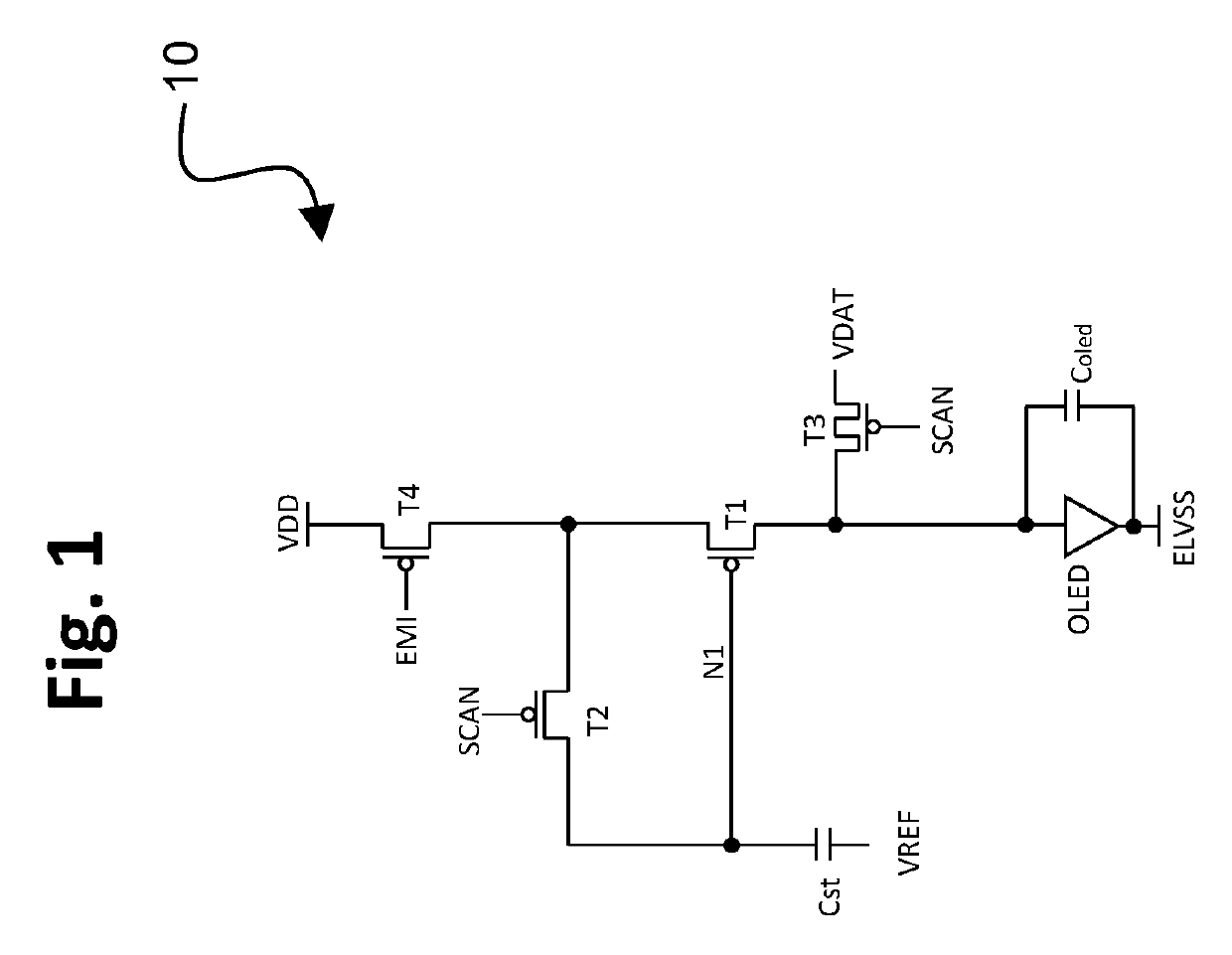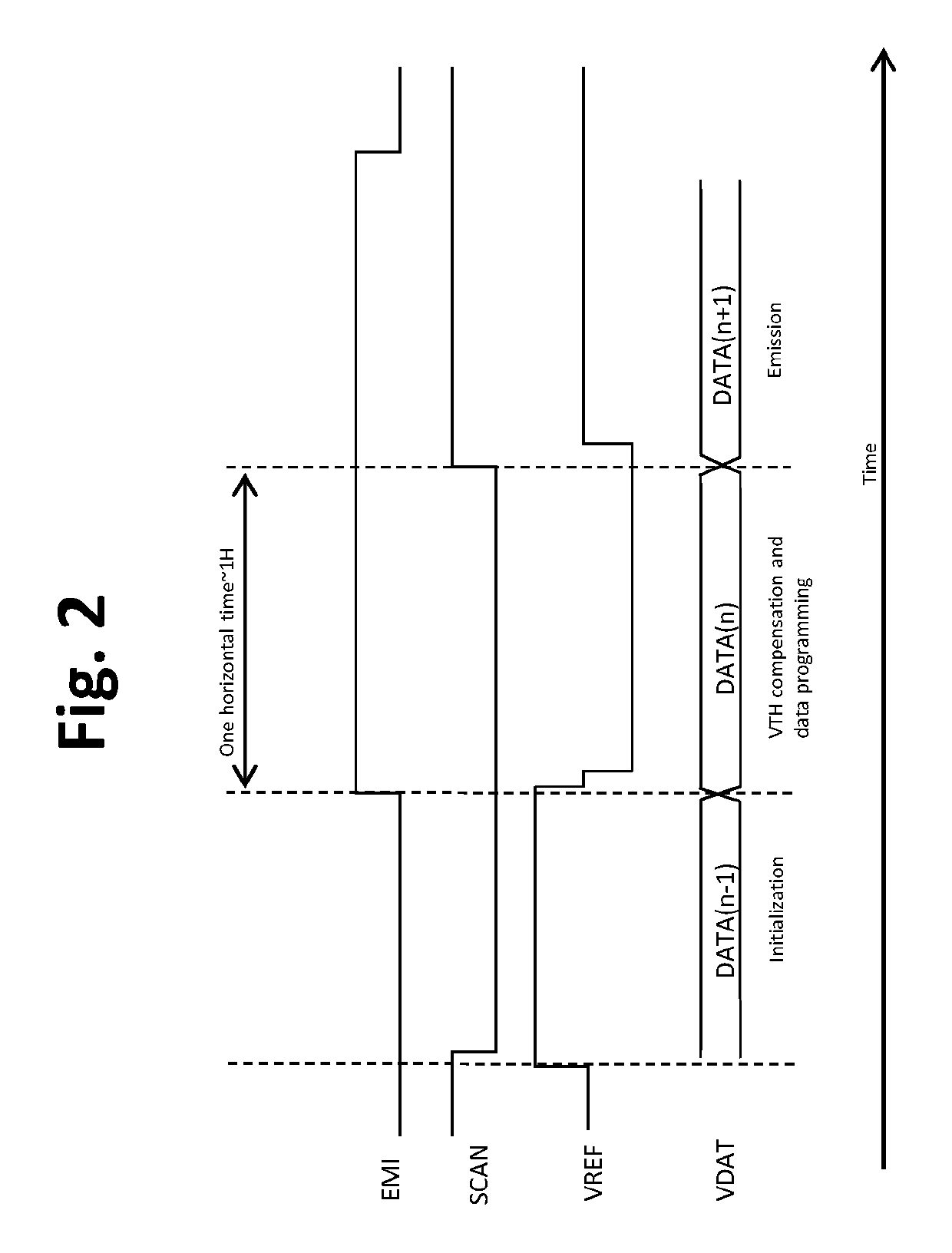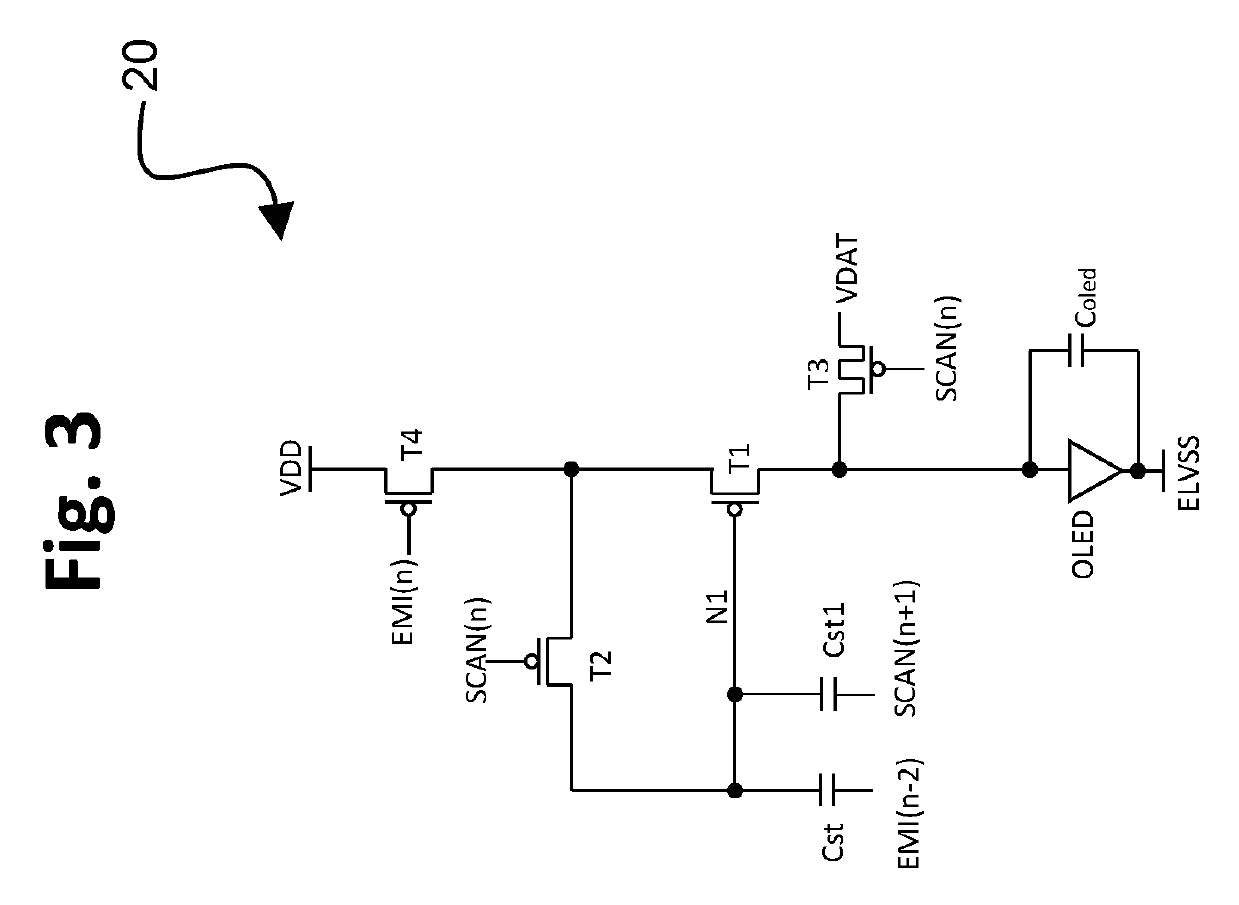TFT pixel threshold voltage compensation circuit with data voltage applied at light-emitting device
a compensation circuit and data voltage technology, applied in the direction of instruments, static indicating devices, etc., can solve the problems of memory effects from previous frame data, affecting the true black state, and pixels in the display may not exhibit uniform brightness for a given vdat value, so as to reduce or eliminate memory effects
- Summary
- Abstract
- Description
- Claims
- Application Information
AI Technical Summary
Benefits of technology
Problems solved by technology
Method used
Image
Examples
Embodiment Construction
[0033]Embodiments of the present invention will now be described with reference to the drawings, wherein like reference numerals are used to refer to like elements throughout. It will be understood that the figures are not necessarily to scale.
[0034]FIG. 1 is a drawing depicting a first circuit configuration 10 in accordance with embodiments of the present invention, and FIG. 2 is a timing diagram associated with the circuit configuration of FIG. 1. In this example, the circuit 10 is configured as a TFT circuit that includes multiple p-type transistors T1-T4 and a single storage capacitor Cst. The circuit elements drive a light-emitting device, such as for example an OLED. The light-emitting device (OLED) has an associated internal capacitance, which is represented in the circuit diagram as Coled. In addition, although the embodiments are described principally in connection with an OLED as the light-emitting device, comparable principles may be used with display technologies that em...
PUM
 Login to View More
Login to View More Abstract
Description
Claims
Application Information
 Login to View More
Login to View More - R&D
- Intellectual Property
- Life Sciences
- Materials
- Tech Scout
- Unparalleled Data Quality
- Higher Quality Content
- 60% Fewer Hallucinations
Browse by: Latest US Patents, China's latest patents, Technical Efficacy Thesaurus, Application Domain, Technology Topic, Popular Technical Reports.
© 2025 PatSnap. All rights reserved.Legal|Privacy policy|Modern Slavery Act Transparency Statement|Sitemap|About US| Contact US: help@patsnap.com



